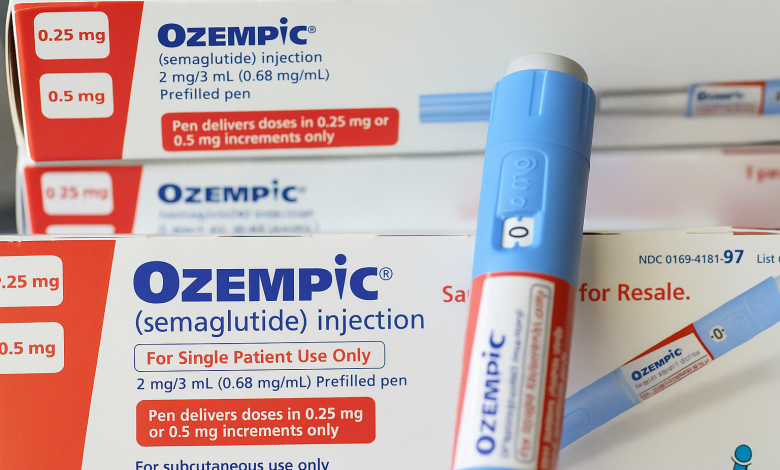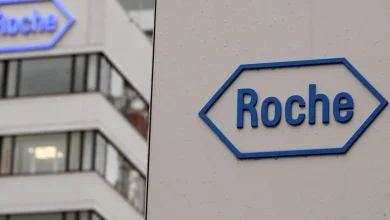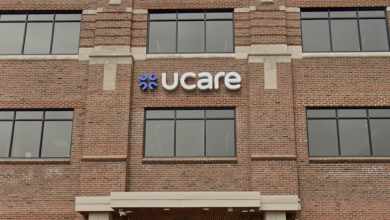Costco Joins the Weight Loss Revolution: Ozempic and Wegovy Now Sold at Discount Prices!

Introduction
In an unusual move for a big-box wholesale retailer, Costco Joins the Weight Loss Revolution by dramatically expanding its role in healthcare. With the rising popularity of GLP-1 drugs (like Ozempic and Wegovy) for weight loss and metabolic health, Costco is now offering these medications at markedly reduced prices through its Member Prescription Program. This shift places Costco not just as a distributor of food, electronics, or household goods — but as an active player in the wellness and pharmaceutical marketplace.
- The context: why GLP-1 drugs are so popular now
- What exactly the Costco initiative provides
- The implications for consumers, the pharmaceutical industry, and public health
- The challenges, criticisms, and caveats
- A look ahead: what this could mean for the future of retail, healthcare, and weight management
1. The GLP-1 Revolution: Why Ozempic and Wegovy Are So Sought After
To understand why Costco Joins the Weight Loss Revolution feels like a turning point, one must first appreciate the broader context: the surge in demand for GLP-1 receptor agonist drugs.
What Are GLP-1 Drugs?
- Drugs like Ozempic and Wegovy (both by Novo Nordisk) contain the active ingredient semaglutide or related analogues. While Ozempic is primarily approved for type 2 diabetes treatment, Wegovy is explicitly approved for weight management in people with obesity or overweight plus a comorbidity.
- These agents work by mimicking the GLP-1 hormone (glucagon-like peptide-1), which influences insulin secretion, slows gastric emptying, and importantly for weight loss, modulates appetite and satiety signaling in the brain.
- The appetite-suppressing effect has made these drugs not just tools for glycemic control but powerful weight loss treatments.
Explosive Demand and Pricing Pressures
- Over the past few years, demand for GLP-1s has exploded. Some estimates suggest that 1 in 8 U.S. adults by 2024 had tried or been prescribed a GLP-1 drug.
- However, those drugs have historically come with steep prices. Without insurance coverage, patients pay anywhere from $950 to $1,600+ per month for doses of semaglutide drugs.
- The high cost has fueled a black market in counterfeit pens and compounding solutions, raising significant safety concerns.
Thus, from a consumer standpoint, the appeal is strong — but access and affordability are major barriers.
2. How Costco Is Making a Move: What the Discount Initiative Offers
Partnership with Novo Nordisk & Member Prescription Program
The boldest aspect of Costco Joins the Weight Loss Revolution is Costco’s partnership with Novo Nordisk to offer Ozempic and Wegovy at half price ($499 for a four-week supply) to consumers paying out-of-pocket (i.e., without involving insurance).
- This 50% discount is available through the Costco Member Prescription Program (MPP), which is Costco’s internal mechanism to help members get lower prices on prescription medications.
- Additional discounts may apply: for example, Costco executive members or Costco Citibank Visa cardholders might receive an extra 2% off.
- In effect, Costco becomes a direct retail outlet for these blockbuster weight loss medications, albeit under prescription and regulatory oversight.
Earlier Moves: A Weight-Loss Program via Sesame
Prior to the discount announcement, Costco had already dipped its toes into the medical weight-loss domain via a partnership with Sesame, a virtual healthcare marketplace.
- Under the Costco + Sesame model, members could enroll in a three-month weight-loss program for $179 (versus $195 for nonmembers). The program included video consultations, messaging with clinicians, diet/lifestyle guidance, and potential prescription of medications (if clinically appropriate).
- However, the program did not include charging for the actual medications or laboratory work — those expenses remained separate.
- That approach had mixed success; after about five months, Sesame reportedly stopped accepting new enrollments under the discounted program.
Still, that earlier model showed Costco’s interest in integrating united healthcare services — setting the stage for the more aggressive discounting move.
What the New Discount Means in Practice
When fully implemented, under Costco Joins the Weight Loss Revolution, a person would:
- Be a Costco member (or eligible via MPP)
- Obtain a valid prescription for Ozempic or Wegovy
- Pay $499 for a four-week supply through Costco’s prescription program (assuming out-of-pocket payment)
- Possibly get small additional discounts (e.g., 2%) depending on membership tier or card affiliation
This represents a stark shift from the typical out-of-pocket costs, making the drugs much more accessible to a broader base of consumers.
3. Implications: Who Gains, Who Risks, and What Changes
Benefits to Consumers and Patients
- Greater affordability and access – For many people seeking weight loss, $499 for a month (versus $1,000+) is a meaningful reduction, potentially making the treatment accessible to a wider socioeconomic group.
- Trusted retail environment – Costco is seen by many as a reliable, well-regulated brand. Having high-cost medications delivered via Costco may reduce fears of counterfeit or low-quality products.
- One-stop shopping for wellness – This expands Costco’s brand from bulk goods retailer to a hybrid retailer-healthcare facilitator, offering more value to members.
- Market pressure on other providers – When a major retailer brings down prices, it may force competitors or pharmacies to reconsider pricing structures.
Implications for the Pharmaceutical Industry
- Negotiated pricing and volume – Novo Nordisk’s participation signals that drugmakers may increasingly partner with large retailers to manage pricing and distribution, especially for high-demand drugs.
- Margin pressure on middlemen – Pharmacies, specialty pharmacies, and intermediaries may face pressure as Costco cuts in on their territory.
- Push toward direct-to-consumer models – This mirrors broader trends where pharmaceutical companies (e.g. via NovoCare) are trying to control pricing and distribution more directly.
Public Health and Regulatory Considerations
- Potential democratization of obesity treatment – If more people can access these medical interventions, the burden of obesity and its comorbidities (diabetes, hypertension, etc.) could decrease.
- Oversight and safety risks – Lowering price and expanding access can lead to misuse, self-prescribing, or use without proper medical supervision. Regulatory frameworks must be robust.
- Insurance and reimbursement impacts – Insurers may have to revisit coverage policies, especially if discount retail models undermine reimbursement structures.
- Equity and disparities — While this helps many, those without access to Costco or in countries outside U.S. markets may still be shut out.
4. Challenges, Criticism, and Cautionary Notes
While the headline “Costco Joins the Weight Loss Revolution” sounds almost utopian for consumers, the real world is messier. Here are some of the challenges and critiques that may arise.
Not a Panacea for Pricing
- Even $499/month may still be expensive for many who require long-term therapy.
- Some GLP-1 drugs require dose escalations over time, which may push costs higher.
- The discount is only for out-of-pocket payments — if a patient’s insurance does not cover weight-loss indication, financial burden may still persist.
Regulatory & Ethical Concerns
- Weight-loss medications have side effects and must be managed medically; expanding access without robust clinical oversight could lead to misuse or complications.
- There is a thin line between empowering consumers and encouraging off-label use.
- There will likely be scrutiny from regulatory bodies about whether discounting distorts standard reimbursement or violates fair-pricing norms.
Program Sustainability & Business Viability
- The prior Costco + Sesame discount program was reportedly discontinued (or halted for new enrollees) after just a few months.
- If the discount program is not financially sustainable (due to slim margins or regulatory pushback), Costco or Novo Nordisk might pull back or scale back the offering.
Inequities Still Remain
- Not everyone is a Costco member or lives near a Costco pharmacy.
- International markets, especially outside the U.S., may not see similar deals due to differing regulatory, pricing, and distribution systems.
- Populations with less healthcare access (rural areas, underinsured groups) may still be left behind.
Skepticism in the Media
Some media caution that the announcement may overpromise. A Business Insider coverage warned that while Costco was offering prescriptions through the partnership with Sesame, the actual cost of the drug wasn’t covered in the $179 program — the drug costs could still run very high.
5. Looking Ahead: What’s Next After “Costco Joins the Weight Loss Revolution”?
If Costco succeeds in its discounted GLP-1 program, the ripple effects could be profound. Here’s what to watch.
Retailers as Healthcare Gatekeepers
Costco is not alone — other major retailers (Amazon, Walmart, CVS, Walmart’s Sam’s Club, etc.) have already made moves into healthcare, telemedicine, and pharmacy services.
If Costco’s model proves viable, more retailers will likely adopt similar strategies, turning pharmacies and drug distribution into battlefield for retail giants.
Competitive Responses
- Competing pharmacies may respond with their own discounted pricing or loyalty programs.
- Insurance companies may renegotiate or change coverage models to adapt.
- Pharmaceutical companies might push harder on direct-to-consumer distribution models (bypassing pharmacies) or adopt more aggressive discounting strategies.
Price Pressure & Industry Restructuring
- Sustained price pressure from large retailers might force structural shifts in drug pricing across class lines—not just GLP-1s.
- Smaller specialty pharmacies may struggle unless they find niche advantages (e.g. home care support, patient services).
Expansion of Indications & Off-Label Use
- As more people gain access, off-label uses or expansion into related metabolic conditions may grow.
- Clinical research and regulatory scrutiny will intensify, especially around long-term safety, comparative outcomes, and population-level effects.
International Impacts & Global Access
- If similar models are adopted in other countries, global access to weight-loss medications might increase.
- However, country-specific regulatory, patent, and pricing laws will likely complicate such rollouts.
6. Conclusion
Costco Joins the Weight Loss Revolution is more than a catchy headline — it signals a shift in how high-cost, high-stakes medications may be delivered. By offering Ozempic and Wegovy at discounted prices via its Member Prescription Program, Costco is staking a claim in healthcare, not just retail.
Of course, the path forward is uncertain. The earlier experiment with Sesame’s discounted weight-loss program was curtailed. The long-term sustainability of steep discounts, regulatory oversight, and equitable access all remain major questions.
Still, there is something symbolically powerful about a warehouse retailer — traditionally known for bulk goods, gasoline, and discount electronics — becoming a major distribution point for weight-loss drugs. It underscores how transformative the GLP-1 era could be, and how retail, healthcare, and wellness are converging in new ways.
If you like, I can also prepare a shorter summary or a version optimized for SEO or publication (with subheadings, pull quotes, etc.). Do you want me to polish or adapt this further?




